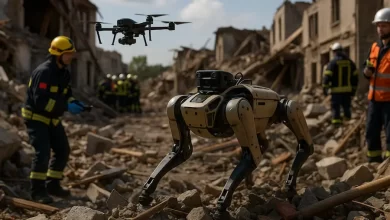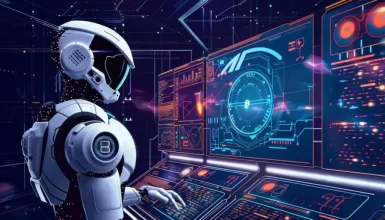AI and Job Automation: What Roles Will Humans Have Left?
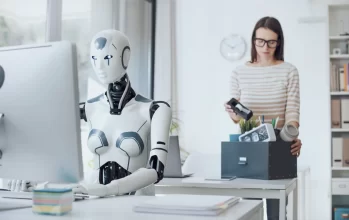

The blog post AI and Job Automation: What Roles Will Humans Have Left? explores the growing influence of AI job automation on today’s workforce. It begins by defining AI and its implications for various job roles, highlighting how automation is transforming industries and tasks. The article discusses the impact of AI job automation, emphasizing which positions are most at risk and identifying opportunities for new roles. It also emphasizes the importance of enhancing human-AI collaboration to create efficient workflows, ensuring that human skills complement automated processes. Finally, the post offers future insights, providing strategies for individuals to secure their roles in an increasingly automated world, underscoring the need for adaptability and continuous learning to thrive amid these changes.
Understanding AI And Job Automation In Today’s Workforce
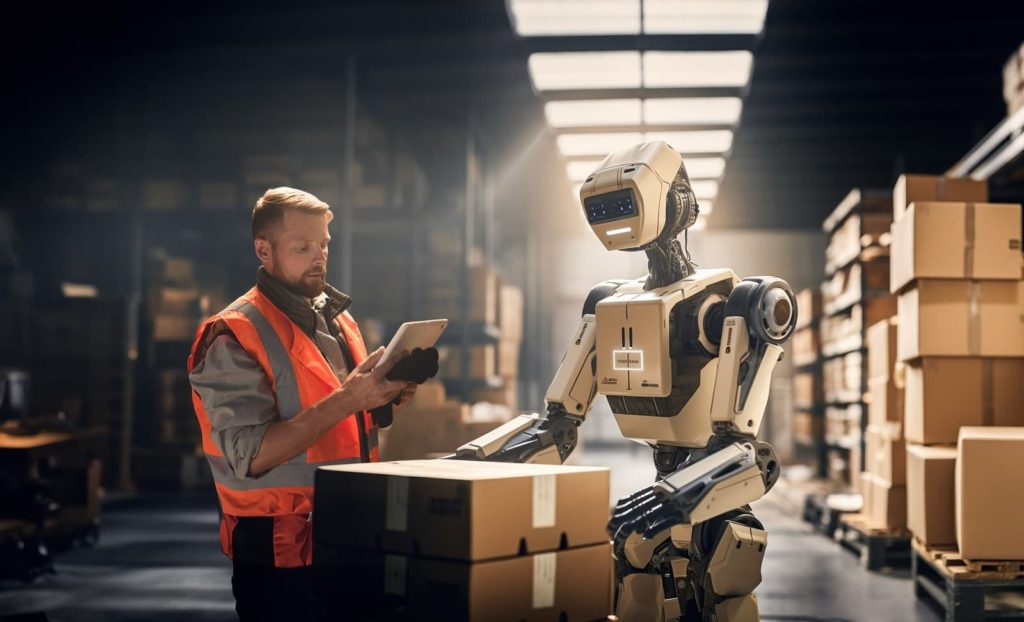


The rise of AI job automation has sparked an ongoing debate regarding its implications for the workforce. Many industries are experiencing significant shifts as automated systems take over routine tasks, leaving employees to handle more complex responsibilities. This transition not only requires a reevaluation of job roles but also calls for upskilling and adaptation to the evolving landscape. The future of work is poised to change; understanding AI’s capabilities and limitations is crucial for employees aiming to remain relevant in their fields.
Key Aspects To Consider:
- AI as a complementary tool rather than a complete replacement
- The importance of soft skills in an automated environment
- Industry-specific impacts of AI job automation
- The role of continuous learning and development
- Potential for job creation in tech-oriented fields
- The ethical implications surrounding AI implementation
As numerous sectors integrate AI technologies, the nature of jobs is undergoing a profound transformation. While no one can precisely predict which roles will be rendered obsolete, it is clear that creativity, emotional intelligence, and strategic thinking will remain valuable human attributes. Workers may find themselves in more collaborative settings, where they partner with AI to enhance productivity. Such a shift emphasizes the need for adaptability, as embracing new technologies can arm individuals with the tools required to thrive in this new era.
Embracing the change brought about by AI job automation offers opportunities for innovation and personal growth in today’s workforce.
The Impact Of AI Job Automation On Various Roles



As AI job automation continues to advance, its effects are becoming increasingly evident across various sectors. The introduction of intelligent systems and machines capable of performing tasks traditionally undertaken by humans has caused significant job displacement. Many professionals are now grappling with how to adapt to this evolving landscape. It’s vital to understand that while AI may eliminate certain roles, it also creates opportunities for new positions and responsibilities within the workforce.
Organizations are reassessing their workforce structure, leading to changes in required skills and roles. Employees in various industries must begin to recognize the importance of developing competencies that complement AI technologies. This adaptation is central to maintaining relevance in an AI-driven workplace. To navigate these transformations effectively, a strategic approach to skill development and job restructuring is essential.
| Industry | Roles Affected | New Opportunities |
|---|---|---|
| Manufacturing | Assembly line workers | Automation specialists |
| Healthcare | Radiologists | AI data analysts |
| Finance | Bank tellers | Risk management analysts |
| Retail | Cashiers | Customer experience managers |
To prepare for the impending changes in the job market brought about by AI job automation, workers should take proactive steps. Understanding the shifting dynamics will not only enhance adaptability but also open doors to new pathways for career development. Below are some key steps to consider:
Steps For Adapting To AI Integration:
- Identify transferable skills that can be enhanced with AI knowledge.
- Engage in continuous learning through online courses and professional workshops.
- Network with industry professionals who are knowledgeable about AI technologies.
- Develop a mindset of flexibility and openness to change.
- Participate in collaborations that leverage both human creativity and AI efficiency.
- Stay informed about trends and innovations in AI relevant to your sector.
Adapting Skills For The AI Workforce
The transition to an AI-dominated workforce calls for a shift in the skill set of professionals across industries. Individuals need to focus on enhancing their critical thinking, creativity, and emotional intelligence – traits that are inherently human and cannot be replicated by artificial intelligence. In this new ecosystem, those who adapt their skill sets will be better positioned to collaborate more efficiently with AI systems, ensuring their roles evolve rather than disappear.
Examples Of AI Disruption In Industries
Various sectors are experiencing notable disruption due to the incorporation of AI technologies. For instance, in manufacturing, robotics is optimizing production lines, resulting in the reduction of manual labor needs. In the healthcare industry, AI algorithms are paving the way for faster diagnoses, which could lead to fewer traditional radiology positions. These examples underscore the necessity for professionals to not only be aware of these changes but also to actively engage in upskilling to remain competitive and relevant in their fields.
Enhancing Human-AI Collaboration For Efficient Workflows
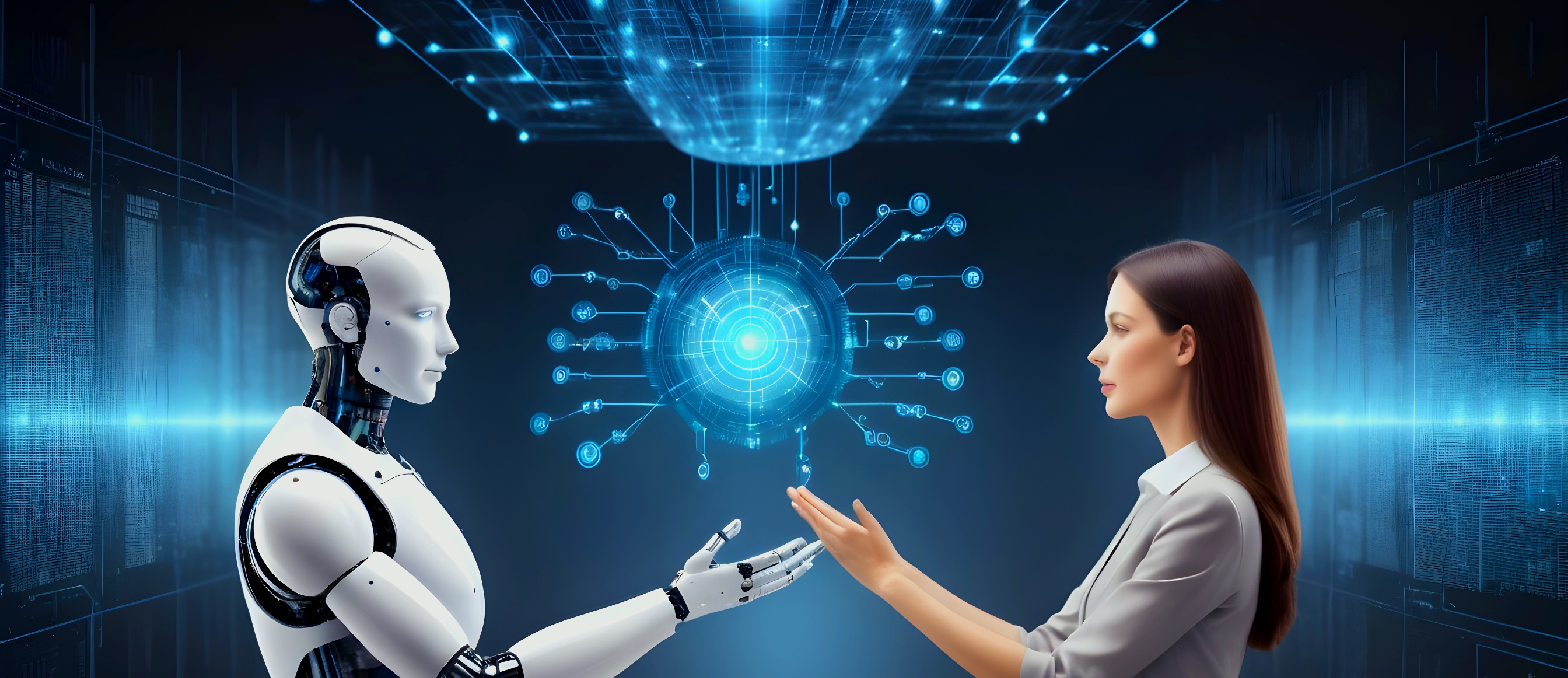


In an era where AI job automation is transforming industries, the synergy between human workers and artificial intelligence has never been more crucial. As businesses embrace advanced technologies, enhancing human-AI collaboration becomes essential for maintaining productivity and efficiency in the workplace. By leveraging the unique strengths of both humans and AI, organizations can create workflows that are not only efficient but also innovate solutions that drive lasting impact.
Tips For Effective Human-AI Collaboration:
- Establish clear roles and responsibilities for AI and human tasks.
- Encourage open communication between team members and AI systems.
- Regularly train and update employees on AI capabilities and limitations.
- Utilize AI to support human decision-making rather than replace it.
- Set measurable outcomes to assess the effectiveness of collaboration.
- Foster a culture of adaptability and continuous learning.
- Solicit feedback from users to improve AI functionalities and workflows.
As organizations move forward, the importance of adapting to the challenges and opportunities presented by AI job automation cannot be overstated. The collaborative environment encourages innovation and allows for the enhancement of human capabilities. Organizations that prioritize effective human-AI collaboration are better positioned to save costs, increase productivity, and harness new revenue streams, thereby creating a resilient workforce ready to tackle the demands of the future.
Case Studies In Human-AI Collaboration
Various industries provide compelling examples of successful human-AI collaboration. For instance, in the healthcare sector, AI is used to analyze patient data and provide predictive insights, allowing doctors to make informed decisions faster. In finance, AI-driven algorithms assist analysts in identifying trends and risks, yet the human intuition remains invaluable in interpreting data nuances. These partnerships illustrate how leveraging AI can enhance workflows while preserving the critical human touch that is essential in many fields.
Future Insights: Securing Your Role In An Automated World



As we navigate the evolving landscape of the future of work, understanding the implications of AI job automation becomes crucial. While automation promises increased efficiency and productivity, it also raises concerns about job displacement. However, not all roles are at risk; instead, many are poised for transformation. By adapting and embracing new skills, workers can position themselves favorably in an automated world. Those who leverage technology to enhance their capabilities will likely find themselves in roles that emphasize uniquely human skills such as creativity, emotional intelligence, and critical thinking.
Actionable Steps To Secure Your Position:
- Identify transferable skills that complement AI technologies.
- Invest in lifelong learning to stay updated with industry trends.
- Enhance your digital literacy to utilize AI tools effectively.
- Develop soft skills like collaboration and communication.
- Engage in professional networks to share knowledge and resources.
- Seek roles that focus on human-AI collaboration within your organization.
- Be adaptable and open to change, evolving alongside technology trends.
By following these actionable steps, you can secure your role in an increasingly automated environment. Remember, the goal is not just to survive AI job automation but to thrive alongside it. Embrace continuous improvement and cultivate a mindset that welcomes change, ensuring that you remain relevant in the future of work. As businesses continue to evolve, those who focus on human-machine synergy will find new opportunities that were previously unimaginable.
Briefing Document: The Impact of AI Job Automation and the Future of Human Work
Executive Summary
This briefing document summarizes key insights from the provided source regarding the transformative impact of AI job automation on the global workforce. The core theme is that while AI will undoubtedly displace certain roles, its primary function should be as a complementary tool rather than a complete replacement for human labor. The document emphasizes the critical importance of human-AI collaboration, continuous learning, and the development of uniquely human skills (creativity, emotional intelligence, critical thinking) to navigate and thrive in an increasingly automated world. Proactive adaptation, skill development, and a flexible mindset are presented as essential strategies for individuals to secure their roles in the “future of work.”
Main Themes and Key Insights
The source outlines several critical themes concerning AI’s impact on employment:
- AI as a Complementary Tool, Not a Complete Replacement: * The source repeatedly stresses that AI’s rise “sparked an ongoing debate regarding its implications for the workforce,” but ultimately positions AI as a supportive technology. * It highlights “AI as a complementary tool rather than a complete replacement,” suggesting that rather than outright eliminating jobs, AI will transform them. * The goal is “not just to survive AI job automation but to thrive alongside it.”
- Transformation of Job Roles and the Need for Re-evaluation: * AI is “transforming industries and tasks,” leading to “significant shifts as automated systems take over routine tasks, leaving employees to handle more complex responsibilities.” * This requires a “reevaluation of job roles” and “changes in required skills and roles” across organizations. * “Many industries are experiencing notable disruption due to the incorporation of AI technologies,” such as robotics optimizing manufacturing and AI algorithms assisting in healthcare diagnoses.
- Displacement and Creation of Jobs: * While the source acknowledges “significant job displacement” and that “AI may eliminate certain roles,” it simultaneously asserts that AI “also creates opportunities for new positions and responsibilities within the workforce.” * Examples of affected roles include: * Manufacturing: Assembly line workers (at risk) vs. Automation specialists (new opportunity) * Healthcare: Radiologists (at risk) vs. AI data analysts (new opportunity) * Finance: Bank tellers (at risk) vs. Risk management analysts (new opportunity) * Retail: Cashiers (at risk) vs. Customer experience managers (new opportunity)
- The Enduring Value of Uniquely Human Skills: * The source consistently emphasizes that certain human attributes remain irreplaceable by AI. “Creativity, emotional intelligence, and strategic thinking will remain valuable human attributes.” * Professionals need to “focus on enhancing their critical thinking, creativity, and emotional intelligence – traits that are inherently human and cannot be replicated by artificial intelligence.” * The “human intuition remains invaluable in interpreting data nuances,” particularly in fields like finance.
- The Imperative of Adaptability and Continuous Learning: * “Adaptability and continuous learning” are underscored as crucial for thriving in this new environment. * “Upskilling and adaptation to the evolving landscape” are essential. * The source advises “engag[ing] in continuous learning through online courses and professional workshops” and “stay[ing] informed about trends and innovations in AI relevant to your sector.” * Individuals should “develop a mindset of flexibility and openness to change.”
- Importance of Human-AI Collaboration: * The “synergy between human workers and artificial intelligence has never been more crucial.” * “Enhancing human-AI collaboration becomes essential for maintaining productivity and efficiency.” * Effective collaboration involves: * “Establish[ing] clear roles and responsibilities for AI and human tasks.” * “Utiliz[ing] AI to support human decision-making rather than replace it.” * “Fostering a culture of adaptability and continuous learning.” * Organizations prioritizing “effective human-AI collaboration are better positioned to save costs, increase productivity, and harness new revenue streams.”
- Proactive Strategies for Individuals: * The source provides “actionable steps to secure your position” in an automated world: 1. “Identify transferable skills that can be enhanced with AI knowledge.” 2. “Invest in lifelong learning to stay updated with industry trends.” 3. “Enhance your digital literacy to utilize AI tools effectively.” 4. “Develop soft skills like collaboration and communication.” 5. “Engage in professional networks to share knowledge and resources.” 6. “Seek roles that focus on human-AI collaboration within your organization.” 7. “Be adaptable and open to change, evolving alongside technology trends.” * “Those who adapt their skill sets will be better positioned to collaborate more efficiently with AI systems, ensuring their roles evolve rather than disappear.”
Conclusion
The “Future of Artificial Intelligence” source presents a balanced perspective on AI job automation, acknowledging its disruptive potential while emphasizing opportunities for growth and innovation. The overarching message is one of proactive engagement: individuals and organizations must embrace continuous learning, cultivate uniquely human skills, and prioritize effective human-AI collaboration to navigate the evolving workforce landscape successfully. The future of work is not one where humans are obsolete, but rather one where “human-machine synergy will find new opportunities that were previously unimaginable.”
Artificial intelligence / humanaifuture.com
🎧 Listen to the Podcast
Want to explore this topic in more depth? Listen to the full podcast for more insights and expert commentary.
▶️ Play on Google DriveNo sign-up needed — just click and listen.
Which job roles are most at risk from AI automation, and which human skills will remain valuable?
Roles primarily involving routine, repetitive, and data-intensive tasks are most susceptible to AI automation. Examples include assembly line workers in manufacturing, radiologists in healthcare, bank tellers in finance, and cashiers in retail. Conversely, uniquely human attributes such as creativity, critical thinking, problem-solving, emotional intelligence, and interpersonal communication (soft skills) will remain highly valuable and are less likely to be replicated by AI.
How can individuals prepare themselves for an AI-driven workforce?
To thrive in an AI-driven workforce, individuals should proactively engage in continuous learning and skill development. Key steps include identifying transferable skills that can be enhanced with AI knowledge, pursuing online courses and professional workshops, networking with AI-savvy professionals, developing digital literacy, fostering a mindset of adaptability and flexibility, and seeking roles that emphasize human-AI collaboration. The goal is to evolve alongside technology rather than be replaced by it.
What are the benefits of enhancing human-AI collaboration in the workplace?
Enhancing human-AI collaboration is crucial for maintaining productivity and efficiency. By combining the unique strengths of humans (creativity, intuition, critical thinking) and AI (speed, data processing, automation), organizations can create more efficient workflows, innovate new solutions, save costs, increase productivity, and uncover new revenue streams. This synergy allows AI to support human decision-making and handle routine tasks, freeing up human workers for more complex and strategic responsibilities.
Can you provide examples of successful human-AI collaboration in different industries?
Yes, several industries demonstrate successful human-AI collaboration. In healthcare, AI analyzes patient data and provides predictive insights, empowering doctors to make faster and more informed diagnoses. In finance, AI-driven algorithms assist analysts in identifying trends and risks, while human intuition remains essential for interpreting data nuances and making complex financial decisions. These examples highlight how AI can enhance human capabilities without completely replacing them.
What ethical considerations are associated with the implementation of AI?
While the source primarily focuses on job automation, it explicitly mentions "The ethical implications surrounding AI implementation" as a key aspect to consider. This implies concerns related to fairness, bias in algorithms, privacy of data, accountability for AI decisions, and the potential societal impact of widespread automation beyond just job displacement.
Will AI completely replace human workers, or will it be a complementary tool?
The source strongly emphasizes that AI should be viewed as a "complementary tool rather than a complete replacement." While AI will automate many routine tasks, it aims to enhance human capabilities and allow employees to focus on more complex, creative, and strategic responsibilities. The future points towards a collaborative environment where humans and AI work together, leveraging each other's strengths.
What is the importance of adaptability and continuous learning in the context of AI job automation?
Adaptability and continuous learning are paramount for individuals to remain relevant in an increasingly automated world. The "future of work is poised to change," and embracing new technologies, upskilling, and developing a flexible mindset are crucial for individuals to secure their roles. By staying informed about AI trends and actively engaging in skill development, workers can ensure their roles evolve and thrive alongside AI rather than becoming obsolete.

